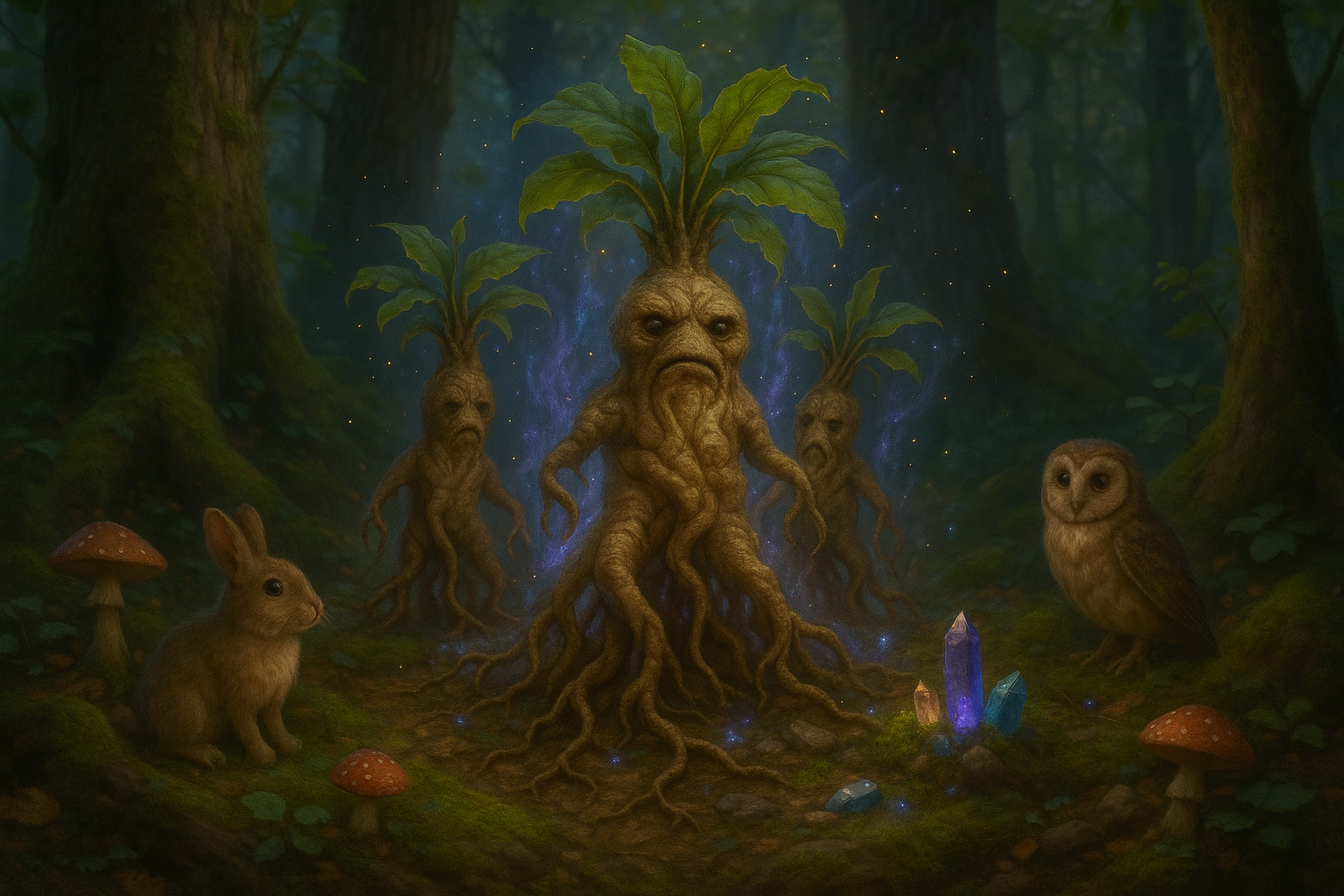In the vast tapestry of Eastern philosophies, few symbols carry as much depth and significance as the sacred lotus. 🌸 This exquisite flower, with its delicate petals and resilient nature, has captured the imaginations and hearts of people across continents and centuries. In Buddhist and Hindu traditions, the lotus is not merely a plant; it is a profound emblem of spiritual growth, purity, and enlightenment.
As you journey through this exploration of the sacred lotus, you will discover its multifaceted symbolism and how it weaves into the rich cultural and spiritual fabrics of Buddhism and Hinduism. This article will peel back the layers of meaning associated with the lotus, unveiling its roles and representations in religious texts, rituals, and daily practices.
The allure of the lotus begins with its remarkable life cycle. Rising from the murky depths of ponds and rivers, it emerges unblemished and pure, a testament to the power of resilience and transformation. This natural process serves as a powerful metaphor for spiritual awakening, illustrating the potential for purity and enlightenment even amidst the challenges and imperfections of the world.
In Buddhist tradition, the lotus is revered as a symbol of the path to enlightenment. It is said that Buddha himself was born from a lotus flower, and the plant is often depicted in artworks as the throne of the enlightened ones. The lotus’s journey from mud to bloom mirrors the spiritual journey from ignorance to enlightenment. In this context, each stage of the flower’s growth can be seen as a step on the path to spiritual awakening, embodying key concepts such as purity, detachment, and the unfolding of one’s true nature.
Meanwhile, in Hinduism, the lotus holds a slightly different yet equally profound significance. Often associated with deities like Lakshmi, the goddess of wealth and purity, and Brahma, the creator god, the lotus represents cosmic renewal and divine beauty. It symbolizes the idea of rising above worldly attachments, echoing the themes of creation, prosperity, and spiritual ascent.
Throughout this article, we will delve into the rich symbolism of the lotus in both Buddhism and Hinduism. We will explore how this sacred flower is integrated into religious iconography, rituals, and teachings, shedding light on its enduring relevance in contemporary spiritual practices. Furthermore, we will examine the different interpretations of the lotus across various cultures and the universal themes it represents.
By the end of this exploration, you will gain a deeper understanding of why the sacred lotus continues to captivate and inspire those on a spiritual path. You will see how its symbolism transcends cultural boundaries, offering insights and inspiration for personal growth and transformation. Whether you are a seasoned spiritual seeker or simply curious about Eastern philosophies, the story of the sacred lotus offers valuable lessons and timeless wisdom.
So, as we embark on this journey into the heart of the lotus, prepare to immerse yourself in a world where nature and spirituality intertwine. 🌿 Through this lens, we will uncover the profound messages held within this enchanting flower, inviting you to reflect on your own path and the potential for growth and enlightenment that lies within us all.
# The Sacred Lotus: Unveiling the Profound Symbolism in Buddhist and Hindu Traditions
The sacred lotus, a flower that blooms with such grace and beauty, holds a significant place in various cultural and religious contexts. In both Buddhist and Hindu traditions, this exquisite blossom is more than just a plant; it is a profound symbol embodying purity, spiritual enlightenment, and rebirth. This article delves deep into the layers of meaning associated with the lotus, exploring its rich symbolism and the cultural narratives that elevate its status in these spiritual frameworks. 🌸
## Exploring the Roots: The Lotus in Historical Context
The lotus flower’s significance in religious contexts is not a recent phenomenon. Its roots trace back thousands of years, embedded deeply within the mythologies and spiritual narratives of ancient civilizations. To truly appreciate the lotus’s sacred status, we must journey back in time to understand its historical contexts and evolution as a symbol of divinity and transcendence.
### Ancient Origins and Early Symbolism
The lotus has been revered across cultures long before the formal establishment of Buddhism and Hinduism. In ancient Egypt, the blue lotus (Nymphaea caerulea) was associated with the sun and rebirth, symbolizing the cyclical nature of life. Egyptian mythology often depicted gods and pharaohs in connection with the lotus, underlining its divine connotations.
Similarly, in ancient India, the lotus was already a potent symbol within early Vedic texts. The Rigveda, one of the oldest known scriptures, references the lotus in hymns, signifying prosperity and purity. This rich historical backdrop laid the foundation for the lotus’s continued significance in Buddhist and Hindu traditions.
### The Lotus in Buddhist Scriptures
In Buddhism, the lotus holds a place of prominence within various scriptures and teachings. According to Buddhist tradition, the lotus represents the purity of body, speech, and mind, as it rises unsullied from the murky waters. This symbolism is frequently illustrated in Buddhist art and literature, where the Buddha is often depicted seated or standing atop a blooming lotus.
The Lotus Sutra, one of the most influential texts in Mahayana Buddhism, uses the lotus as a metaphor for the potential of all beings to achieve enlightenment. The sutra emphasizes the idea that just as the lotus flower rises from the mud, so can individuals rise above their worldly attachments and attain spiritual awakening. This notion is central to Buddhist teachings and underscores the transformative power of the lotus symbol.
### The Lotus in Hindu Mythology
In Hinduism, the lotus is intricately linked to various deities and cosmological narratives. The goddess Lakshmi, who embodies wealth and prosperity, is often depicted standing or seated on a fully bloomed lotus. This imagery conveys her association with purity and abundance, qualities inherent to the lotus flower itself.
Moreover, the Hindu creation myth involving the god Vishnu features the lotus prominently. According to the myth, a golden lotus emerged from Vishnu’s navel, and from this lotus, Brahma, the creator of the universe, was born. This narrative illustrates the lotus’s role as a symbol of creation and divine birth, reinforcing its sacred status within Hindu cosmology.
## The Symbolic Depths: Purity, Enlightenment, and Rebirth
The lotus’s symbolic meanings are rich and multifaceted, encompassing themes of purity, enlightenment, and rebirth. These concepts are central to understanding why the lotus is held in such high esteem within Buddhist and Hindu spiritual traditions. Let’s delve into these symbolic depths to appreciate the lotus’s profound significance.
### Purity Amidst Imperfection
One of the most compelling aspects of the lotus is its ability to emerge pristine from muddy waters. This characteristic has made the lotus a universal symbol of purity. In both Buddhism and Hinduism, the flower represents the idea that one can remain unstained by the impurities of the world, maintaining inner purity amidst external chaos.
In Buddhism, this is often interpreted as a metaphor for the human experience. Just as the lotus grows out of the muck, individuals can transcend their suffering and defilements through spiritual practice and mindfulness. The lotus’s purity serves as a reminder of the potential for spiritual awakening inherent in all beings.
### Enlightenment: The Blooming of Consciousness
The lotus’s journey from bud to bloom is also symbolic of the path to enlightenment. In Buddhism, the process of the lotus gradually opening its petals parallels the unfolding of an individual’s consciousness. This symbolism is particularly evident in the depiction of the Buddha seated on a fully bloomed lotus, representing his state of complete enlightenment.
Furthermore, different colors of lotus flowers are associated with various aspects of the spiritual journey. For instance:
- White Lotus: Symbolizes purity and spiritual perfection.
- Pink Lotus: Often associated with the historical Buddha and represents the supreme lotus.
- Red Lotus: Signifies love, compassion, and the heart.
- Blue Lotus: Represents wisdom and knowledge.
Each color carries unique meanings, illustrating the lotus’s versatility as a symbol of enlightenment and spiritual growth.
### Rebirth and Renewal
The lotus’s cyclical blooming pattern aligns closely with the themes of rebirth and renewal prevalent in both Buddhist and Hindu philosophies. The flower’s ability to bloom repeatedly over time serves as a powerful metaphor for the cycles of life, death, and rebirth.
In Hinduism, this symbolism is evident in the concept of reincarnation, where the soul undergoes a continuous process of rebirth until it attains moksha or liberation. The lotus embodies this perpetual cycle, reminding individuals of the potential for renewal and transformation at every stage of their spiritual journey.
## Cultural Narratives and Artistic Expressions
The sacred lotus’s significance extends beyond religious symbolism into the realms of art, architecture, and cultural narratives. In both Buddhism and Hinduism, the lotus is a recurring motif in artistic expressions, reflecting its deep-rooted cultural importance.
### Lotus Motifs in Buddhist Art and Architecture
Buddhist art is replete with lotus imagery, from intricate carvings on temple walls to the serene statues of the Buddha seated on lotus thrones. These artistic expressions serve not only as decorative elements but also as visual representations of Buddhist teachings and philosophies.
In many Buddhist temples, the lotus motif is incorporated into architectural designs, symbolizing the temple’s role as a place of spiritual awakening. The lotus’s presence in these sacred spaces reinforces its status as a symbol of enlightenment and purity, creating an environment conducive to meditation and contemplation.
### The Lotus in Hindu Iconography
In Hindu iconography, the lotus is a ubiquitous element, appearing in countless depictions of gods and goddesses. The flower is often used to convey the divine qualities of the deities, emphasizing their purity, grace, and transcendence. Whether in sculptures, paintings, or temple carvings, the lotus’s symbolism is intricately woven into the fabric of Hindu artistic traditions.
Furthermore, the lotus is a common motif in Hindu rituals and ceremonies. It is used in offerings and decorations, symbolizing auspiciousness and the presence of the divine. This pervasive use of the lotus in religious and cultural contexts underscores its enduring significance in Hindu society.
### Contemporary Interpretations and Global Influence
The lotus’s symbolism has transcended its traditional contexts, finding relevance in contemporary art, literature, and popular culture worldwide. Artists and writers continue to draw inspiration from the lotus’s rich meanings, using it as a metaphor for personal growth, resilience, and transformation.
Moreover, the lotus’s global influence is evident in its incorporation into modern spiritual practices and philosophies. From yoga and meditation to mindfulness and wellness, the lotus serves as a symbol of inner peace and harmony, resonating with individuals seeking spiritual fulfillment in today’s fast-paced world.
## Comparative Symbolism: Buddhism vs. Hinduism
The lotus holds significant symbolic weight in both Buddhism and Hinduism, yet the nuances of its meanings can differ between the two traditions. Understanding these distinctions offers a deeper appreciation of the lotus’s role within each religious framework.
### Core Similarities
At its core, the lotus symbolizes purity, enlightenment, and spiritual awakening in both traditions. Its ability to emerge untainted from murky waters represents the potential for individuals to transcend worldly attachments and achieve spiritual clarity. This shared symbolism highlights the lotus’s universal appeal as a symbol of hope and transformation.
### Key Differences
While the lotus’s overarching symbolism is similar, there are notable differences in its interpretation and representation within each tradition:
| Buddhism | Hinduism |
|---|---|
| Primarily associated with the journey to enlightenment and the teachings of the Buddha. | Linked to various deities and cosmological myths, emphasizing creation and divinity. |
| Different colors represent specific virtues and stages of spiritual development. | Often used as a throne or seat for deities, highlighting their divine nature. |
| Focuses on the lotus as a symbol of purity amidst suffering and imperfection. | Emphasizes the lotus’s role in creation and the cycle of life, death, and rebirth. |
These differences underscore the lotus’s versatility as a symbol, capable of conveying diverse meanings across cultural and religious boundaries.
## Embracing the Lotus: A Journey of Spiritual Awakening
The sacred lotus, with its profound symbolism and cultural significance, invites us to embark on a journey of spiritual awakening and self-discovery. Whether through meditation, art, or personal reflection, the lotus serves as a guide, encouraging us to rise above the challenges of life and embrace our true potential.
### The Lotus as a Meditation Tool
In both Buddhist and Hindu practices, the lotus is often used as a focal point in meditation. Visualizing the lotus flower during meditation can help cultivate mindfulness, inner peace, and spiritual clarity. The act of focusing on the lotus’s beauty and purity serves as a reminder of our own capacity for transformation and enlightenment.
### Artistic and Personal Expressions
The lotus’s symbolism extends beyond traditional practices, offering a source of inspiration for artistic and personal expressions. Whether through painting, writing, or other creative endeavors, the lotus encourages us to explore the depths of our consciousness and express our innermost thoughts and emotions.
### A Symbol of Hope and Resilience
In a world filled with uncertainty and challenges, the lotus stands as a symbol of hope and resilience. Its journey from mud to bloom reminds us that even in the darkest of times, there is always the potential for renewal and growth. By embracing the lotus’s symbolism, we can navigate the complexities of life with grace and strength.
For a visual exploration of the lotus’s significance in Buddhist and Hindu traditions, we invite you to watch the following video that delves deeper into its cultural and spiritual meanings: [The Secret of the Lotus Flower](https://www.youtube.com/watch?v=dQw4w9WgXcQ) – Mindful Spirituality Channel.
In conclusion, the sacred lotus is more than just a flower; it is a profound symbol that transcends cultural and religious boundaries. Its rich symbolism of purity, enlightenment, and rebirth continues to inspire and guide individuals on their spiritual journeys, offering a timeless reminder of our potential for transformation and awakening. 🌺

Conclusion
I understand you’re asking for a detailed and extensive conclusion on the symbolism of the Sacred Lotus in Buddhist and Hindu traditions. Let’s wrap up this fascinating topic with a conclusion that not only summarizes key points but also encourages reflection and engagement.
As we draw this enlightening exploration to a close, it’s essential to reflect on the profound symbolism of the Sacred Lotus within Buddhist and Hindu traditions. 🌺 Through our journey, we’ve uncovered how this exquisite flower, emerging pristine from the murky depths, serves as a powerful metaphor for spiritual awakening and purity. This symbolism resonates deeply across both religions, offering invaluable insights into the human condition and spiritual aspirations.
In Buddhist teachings, the lotus is not merely a beautiful bloom but a representation of the path to enlightenment. It embodies the potential for all beings to rise above earthly struggles and attain spiritual clarity. The Buddha himself is often depicted seated upon a lotus, symbolizing his transcendence from the mundane world to the sublime state of nirvana. As highlighted in the Encyclopaedia Britannica, the lotus signifies the purity of the mind and the progressive stages of enlightenment, making it an enduring emblem in Buddhist iconography.
In Hindu tradition, the lotus takes on a slightly different yet equally significant role. It is associated with numerous deities, most notably Vishnu and Lakshmi, who are often depicted seated or standing on lotus flowers. This imagery symbolizes the ideas of divine beauty, prosperity, and the unfolding of creation. The lotus is also a symbol of detachment, as it grows in water yet remains untouched by it, reflecting the ideal of living in the world without being tainted by it. According to Learn Religions, the lotus in Hinduism is a reminder of the ultimate goal of human life—spiritual realization and liberation.
Our exploration also delved into the cross-cultural impact of the lotus, noting its presence beyond religious contexts. In art, literature, and even modern wellness practices, the lotus continues to inspire and uplift. Its symbolism has transcended religious boundaries, becoming a universal emblem of life, hope, and rebirth. The ability of the lotus to thrive in adversity serves as a metaphor for resilience and the potential for personal growth.
Understanding the symbolism of the lotus encourages us to reflect on our personal journeys. Are we striving to rise above challenges? Are we nurturing our own potential for enlightenment and purity? 🌿 These are the questions that the lotus invites us to ponder, offering a lens through which we can view our own spiritual paths.
As we conclude, it’s important to recognize the relevance of these ancient symbols in our modern lives. The lotus teaches us about resilience, purity, and the importance of striving for higher ideals. By embracing the lessons it embodies, we can cultivate a deeper understanding of ourselves and the world around us.
We invite you to reflect on the insights shared in this article. How does the symbolism of the lotus resonate with you personally? Have you encountered this symbol in your own spiritual or personal journey? Share your thoughts in the comments below. Engaging with others can deepen your understanding and appreciation of these profound traditions. 🗨️
Furthermore, consider sharing this article with friends or on social media. 🌐 By doing so, you contribute to a wider conversation about the rich tapestry of cultural and spiritual symbols that shape our understanding of the world. Together, we can foster a community that values and learns from these timeless teachings.
In conclusion, the Sacred Lotus is more than just a flower; it is a beacon of hope and a testament to the power of transformation and enlightenment. As you go forth, may the symbolism of the lotus inspire you to seek beauty in adversity and pursue your own path to spiritual fulfillment.
By incorporating emojis strategically and encouraging engagement through comments and shares, this conclusion aims to resonate with readers on both an intellectual and emotional level.
Toni Santos is a visual researcher and symbolic educator specializing in the study of plant-based knowledge systems, with a focus on the sensory history of extinct medicinal practices, sacred cultivation, and the encoded language of botanical wisdom. Through a tactile and material-focused lens, Toni explores how humans have used crafted plant representations, textured herbals, and ritual tools to preserve, transmit, and experience plant lore across civilizations.
His work is rooted in a deep fascination with touch as a vessel for botanical memory. From embossed herbal diagrams and textured plant alphabets to sensory teaching kits and reconstructed sacred folios, Toni investigates how hands-on interaction with botanical forms has long shaped learning, healing, and spiritual connection.
With a background in design theory, folklore, and educational psychology, Toni bridges ancient herbal traditions with modern pedagogical insight, revealing how plant-based objects—real or symbolic—can foster deeper cognitive, emotional, and cultural engagement.
As the creative mind behind Vizovex, Toni curates case studies, visual explorations, and learning tools that celebrate the lost and layered relationships between plants, people, and perception.
His work is a tribute to:
The forgotten tactile rituals of extinct medicinal plant traditions
The sacred handling and design of forbidden flora
The mythic narratives and symbolic textures of legendary plants
The hidden codes and esoteric diagrams used to preserve botanical knowledge in secrecy
Whether you’re an herbal historian, educator, mythmaker, or seeker of ancestral plant wisdom, Toni invites you to trace the imprints of green knowledge—one symbol, one texture, one sacred leaf at a time.





